![]()
![]()
![]()
Use LEFT and RIGHT arrow keys to navigate between flashcards;
Use UP and DOWN arrow keys to flip the card;
H to show hint;
A reads text to speech;
11 Cards in this Set
- Front
- Back
- 3rd side (hint)
|
The value of the positive fraction or decimal (between 0 and 1) will decrease as the exponent's value is increased. True or False? |
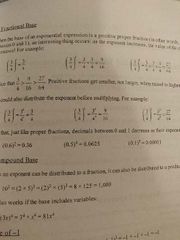
True. Example; |
|
|
|
Odd exponents give negative answer when the base is negative. True or False? |
True. Example: (-1)^1 = -1 |
|
|
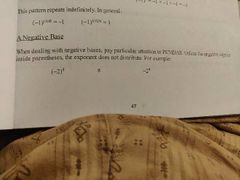
|
True. |
|
|
|
When is the result of a base, which is a fraction, to exponent smaller than the actual base? I.e. how do the fractions behave when they are raised to an even or an odd exponent? |
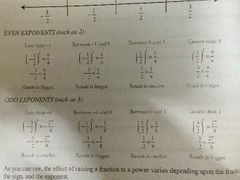
|
|
|
|
To raise a fraction to negative power, raise its reciprocal to the equivalent positive power. True or false. |
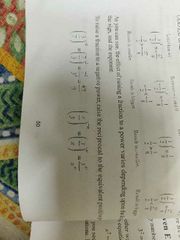
True. Example in photo. |
|
|
|
For any X, √(X)^2 = |X|. True or false? |
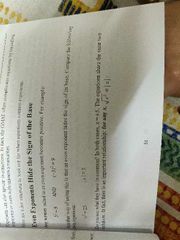
True. |
|
|
|
Even power of a variable is the square of the power with half the exponent. |
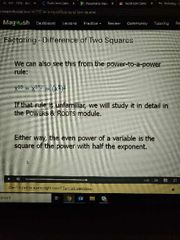
True. For example. |
|
|
|
When we have different bases multiplying together and same exponents then simply multiply the bases together and keep the exponent the same. |
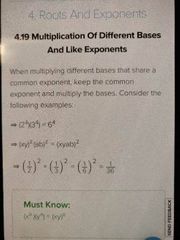
|
|
|
|
Whenever we've same number of common bases as the base (3 bases of 3 or 4 bases of 4) with common exponents, which logic will apply? |
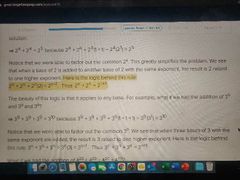
|
|
|
|
When fractions are to be compared in size such that their denominators have exponents then we need to make denominators same by taking LCM of all bases. |
LCM of bases is the highest powered bases. We multiply this LCM with each fraction to make denominator same. |
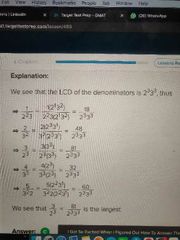
|
|
|
For any 0 < x < 1, that is proper fraction, always remember x^2 < x < √x |

|
|

